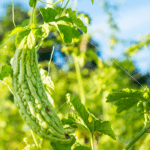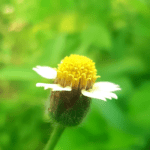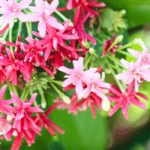Are you an avid gardener looking to expand your plant collection? Do you want to multiply your favorite plants without hassle? Look no further – we have the secret to unlocking successful plant propagation: rooting hormone powder. In this comprehensive guide, we will delve into the world of rooting hormone and explore how it can revolutionize your gardening experience. Get ready to discover the power of rooting hormone and learn the techniques that will help you propagate plants with confidence. Read on to unleash the full potential of your green thumb!
Understanding Rooting Hormone
What is Rooting Hormone?
Rooting hormone is a powerful tool that aids in the propagation of plants by stimulating root growth. It contains synthetic auxins, which are synthetic versions of the plant hormone auxin naturally found in plants. These auxins mimic the effects of natural growth conditions, encouraging the formation of roots in cuttings. Additionally, rooting hormone powders often include cytokinin, another plant growth hormone, as well as fungicides and other chemicals that enhance the survival rate of the cuttings and protect them from fungal infections.
Role of Synthetic Auxins in Rooting Hormone
Synthetic auxins, the key component of rooting hormone, play a crucial role in initiating and promoting root development. When applied to cuttings, they stimulate cell division and elongation, leading to the formation of roots. By mimicking the natural growth hormone found in plants, synthetic auxins provide an ideal environment for root initiation and encourage the growth of a robust root system.
Additional Components in Rooting Hormone Products
Rooting hormone products often contain additional components to optimize the success of plant propagation. These may include cytokinins, which promote cell division and overall plant growth, and fungicides that protect the cuttings from harmful fungal pathogens. The combination of these ingredients ensures the highest chances of successful root development and healthy plant establishment.
Using Rooting Hormone with Stem Cuttings
Selecting Healthy Stem Cuttings
To begin the propagation process, choose healthy stem cuttings from the donor plant. Select stems that are four to eight inches long, taken from new growth. These stems should be free from diseases or pest infestations, ensuring the best chances of successful propagation.
Preparing the Cuttings
Before applying rooting hormone, it is essential to prepare the cuttings properly. Remove the bottom leaves from the stem, leaving only one or two small leaves near the top. Excessive foliage can cause the cutting to lose too much moisture, hindering its ability to develop roots effectively.
Applying Rooting Hormone and Planting
Now, it’s time to apply the rooting hormone powder to the cuttings. Fill a small container with the rooting hormone powder, ensuring it is free from contamination. Dip the cut end of the stem into the hormone powder, covering it thoroughly. Shake off any excess powder, as too much hormone can have adverse effects on root development.
Next, insert the treated stem into a moist growing medium. A mixture of perlite, vermiculite, enriched vermicompost, coco peat powder, neem khali, and a touch of fungicide makes an excellent potting medium for cuttings. Create a small hole in the medium using a pencil or your finger, gently inserting the stem to a suitable depth. Ensure the medium maintains moisture throughout the rooting process, but avoid excessive saturation, as it can lead to rotting.
Leaf Cuttings and Root Cuttings
Propagating Plants from Leaf Cuttings
In addition to stem cuttings, certain plants can be propagated successfully using leaf cuttings. This method is particularly effective for succulents and plants that lack woody stems. To propagate using leaf cuttings, snap a healthy leaf from the parent plant, making sure to get it as close to the base as possible. Dust the exposed end of the leaf with rooting hormone powder and plant it in a soilless potting medium. Plants such as Guava, Hibiscus, and Sansevieria respond well to this method.
Propagation through Root Cuttings
Certain fruit-bearing plants can be propagated using root cuttings, although this method requires more knowledge and skill. To propagate through root cuttings, carefully trim a significant portion of the root near the stem of the parent plant. Lay the root horizontally in a suitable potting medium and store the cutting inside a plastic bag. Maintain humidity and monitor the cutting closely until new root growth and plant growth become visible.
Maximizing Success with Rooting Hormone
Importance of Proper Care and Maintenance
While rooting hormone is a valuable tool in plant propagation, it is important to remember that it is not a magic solution. Proper care and maintenance are crucial to maximizing success. Ensure that the propagated plants receive adequate water, light, and nutrients. Monitor their progress and address any issues promptly to promote healthy root development and overall plant growth.
Monitoring Root Growth and Development
Regularly inspect the cuttings for signs of root growth. After a few weeks, you may notice roots growing out of the bottom of the container, indicating successful propagation. It is important to continue monitoring the progress of the cuttings and provide suitable growing conditions to promote robust root development.
Acclimatizing New Plants to the Outdoors
When the new plants have established a healthy root system, it is time to acclimate them to the outdoor environment. Gradually expose the plants to increasing amounts of sunlight and fluctuating temperatures over a period of time. This process helps the plants adjust to their new surroundings and reduces the risk of shock from sudden temperature changes.
Conclusion
In conclusion, rooting hormone powder is an invaluable resource for plant propagation. By harnessing the power of synthetic auxins and additional growth-enhancing components, gardeners can multiply their favorite plants with ease. Whether using stem cuttings, leaf cuttings, or root cuttings, the application of rooting hormone improves the chances of successful root development and overall plant establishment. With proper care, maintenance, and monitoring, you can create a flourishing garden filled with your favorite plants. Embrace the potential of rooting hormone and unlock a world of endless possibilities in your gardening endeavors.
Remember, the key to successful plant propagation lies in understanding the needs of each plant species, providing optimal growing conditions, and utilizing the benefits of rooting hormone powder. So, grab your gardening tools, choose your preferred propagation method, and let the power of rooting hormone lead you to gardening success. Happy propagating!






